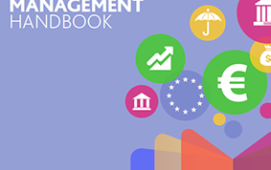
The novelty of the ESG data space has inspired many innovations to help financial institutions build their sustainability investment and risk programmes. Most have sought to fill gaps in the nascent data market. Impact Cubed, however, found its impetus in a very different experience: disenchantment with what was already on offer.
The investment solutions company was formed from a hedge fund run by investor Larry Abele that had been increasingly seeing value in the sustainable investment space. Early into the project, it found that none of the data vendors it approached could meet the fund’s singular vision of marrying risk and returns with impact.
So it created its own business.
“The founders had a quant background and they wanted to take a factorised approach… what they found in the market just wasn’t suitable,” Chris Lee, Impact Cubed head of marketing, tells ESG Insight. “Most of our people come from the investment side, they are investment managers at heart, and know the sustainable investment space inside out. The other vendors we see only know data and not investment itself.”
Spun Off
Impact Cubed separated from the hedge fund business at the turn of the decade and was established with an iron commitment to giving clients only hard quantitative data. Eschewing scores and ratings as the enemy of nuance, the company set about stuffing its databases with information that could be used by clients to build models on its core three-pillar vision of ESG investment.
After a few years building out the technological foundations Impact Cubed launched its core product, SmartESG, last year. Smart ESG enables clients to interrogate financial instruments and other factors in a three-dimensional space that plots risk and return against a selection of impact targets. Among the most popular chosen are the United Nations’ Sustainable development targets (SDGs).
It began filling its databases with climate data and has gradually expanded to include 300+ ESG factors, from biodiversity and water stress, to gender equality and 2,300-plus product and service classifications. It can also track against ESG regulations, including the EU’s Sustainable Finance Disclosure Regulation (SFDR). SmartESG can help clients assess the performance of not only funds and securities but also individual asset managers.
High-Profile Partnerships
The company’s hard work was rewarded last year when S&P Dow Jones Indices chose to use Impact Cubed’s data for a new set of sustainability indexes. It scored a separate success with a large European pension plan that had become similarly disenchanted with available ESG impact indices. The result was a doubling of the impacts of its investments, for the same amount of risk.
“It’s a fact that you can actually have ESG impact and have the returns that you need to make your clients happy,” says Lee from his office in London’s financial centre. “In some cases our clients have been able to double their impact and halve their tracking error.”
Impact Cubed obtains its data from company-reported sources and deploys AI to scrape huge volumes of data from reports and other publications. It has also built and estimation model to fill gaps in the data record based on careful assessment of peers within its data bases on the world’s listed companies. All estimates are assessed by a team of data scientists.
Euroclear saw promise in Impact Cubed’s three-dimensional approach to ESG investment data and became a minority stakeholder. The European trading giant saw an opportunity to enhance its own ESG capabilities with the investment. Like the S&P DJI deal, Lee believes this has given Impact Cubed the credibility it needs to scale SmartESG.
“These partnerships help us to win the confidence of the market,” he says. “It can take people a while to get their heads around new ways of doing things, especially integrating ESG properly to align, and often improve, risk and return.” ”
Future Growth
Lee says the uptake of Impact Cubed’s services has been rapid. It now has employees spread across London, Europe and the US, and it is in negotiations to provide data and services to a host of major pension funds in multiple continents.
The company’s success, Lee says, lies in its dogged adherence to a policy of transparency. It will only offer raw data and not derived scores or vendor classifications made on undeclared methodologies.
“You can’t make a decision based on one number or a colour coding,” Lee says.
The established ESG rating calculus lacks the nuance that investors need, he adds.
“You can use exclusions, for instance, but that’s an archaic approach because when you start to do that, your risk goes sky-high because you’ve excluded so many funds or companies that you end being left with a tiny pool to pick from.”
Impact Cubed has added other services, including portfolio model construction and custom indexing. Late last year it teamed up with index technology company MerQube to create new ESG indices.
Lee says the company sees its future in investment solutions. Impact Cubed believes that data alone will become so commoditised that it will eventually be made freely available, offering few opportunities for vendors to differentiate their services.
Instead, Impact Cubed sees growth in the use of that data to help investors put their capital where it can have most impact.
“Data is obviously still important because that’s what our business is built on, but we’re developing new and exciting ways to use it now,” he says. “We have all this nuance and investors can do whatever they want with it – think of creating a SDG-Education aligned index for a teachers pension plan, or a biodiversity note that your retail clients may want to invest in. With the right data, and the right mechanisms the future is bright for investors.”
Subscribe to our newsletter




